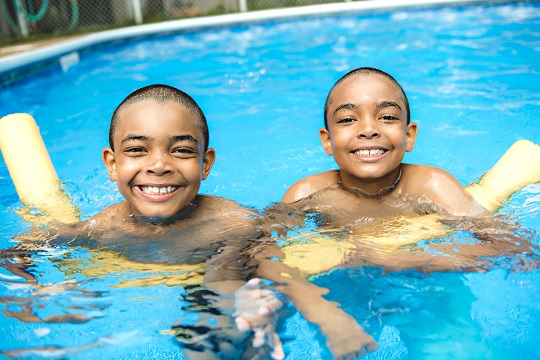Did you know? Every five days in summer, a child drowns in a portable pool. This happens most often to kids under 5 years old, and usually happens in their own backyard. But these tragedies are often preventable by following these tips from the National Drowning Prevention Alliance (NDPA) and Children’s Minnesota.
6 tips to prevent drowning
Active adult supervision
Keep kids under the age of 5 within arm’s reach at all times. Older children or those who are skilled swimmers should still be actively supervised at all times. If you’re with a group of adult supervisors, designate one person at a time to be distraction-free and responsible for watching any kids in the water and switch regularly.
Life jackets
If your child is young or is not a strong swimmer, they should wear a U.S. Coast Guard-approved life jacket while swimming. Life jackets should be in good condition and be the right size for your child’s height and weight.
More life jacket tips fitting tips can be found here.

Remove toys from the pool
Removing toys from the pool when not in use can reduce temptation to go in the water.
Install appropriate fences
If your pool—above-ground or in-ground—is at least 18 inches deep, it must be surrounded by a fence that is 4 feet tall and all fencing supports should be vertical (top-to-bottom) as horizontal (side-to-side) supports can promote climbing. There should not be more than 4 inches of space between the bottom of your fence and the top of the pool. And once you install a fence, you should never remove it.
Ladders
Ladders should be removable or have a locking gate to restrict access to the water. Keep them in when using your pool, and immediately remove or lock them when not in use.
Enforce pool rules
Rules—like no running, pushing or horseplay—exist for a reason! Make sure your children understand these rules, especially when there is no life guard on duty.
The American Academy of Pediatrics and NDPA recommend parents keep these safety tips on mind any time a child is near water—including pools, lakes, oceans or even the bathtub.
Children’s Minnesota is a Level I Pediatric Trauma Center
At Children’s Minnesota, we love kids, but we would rather see them safe and at home. We understand that accidents can and do happen, which is why we are proud that our emergency department in Minneapolis is certified as a Level I pediatric trauma center by the American College of Surgeons. That means we’re ready to give kids the highest level of care 24 hours a day, 365 days a year.